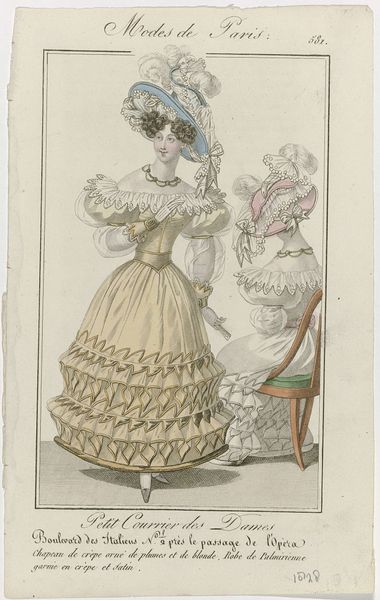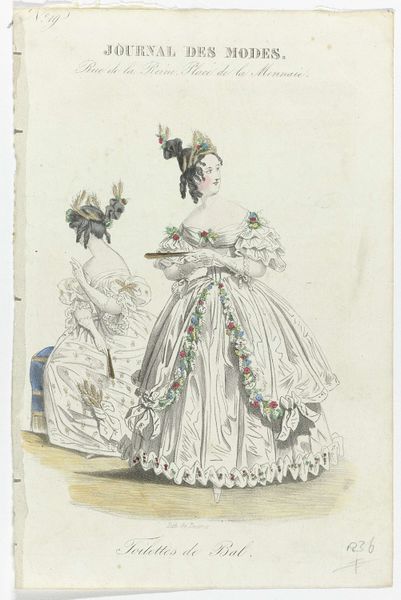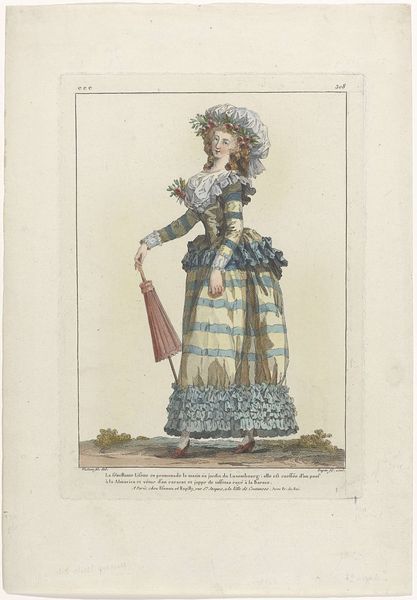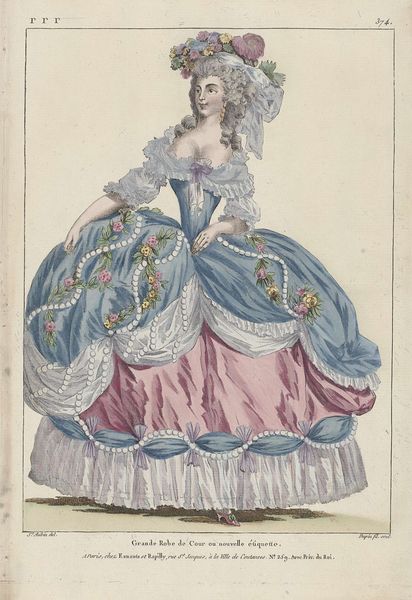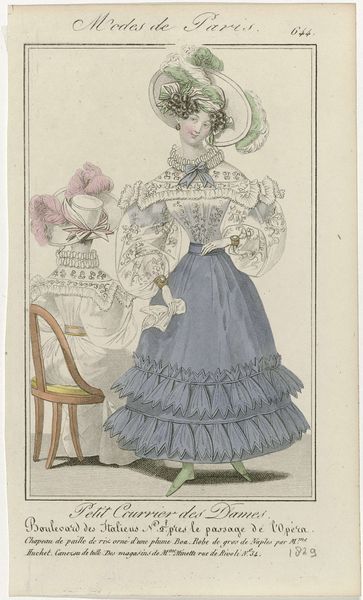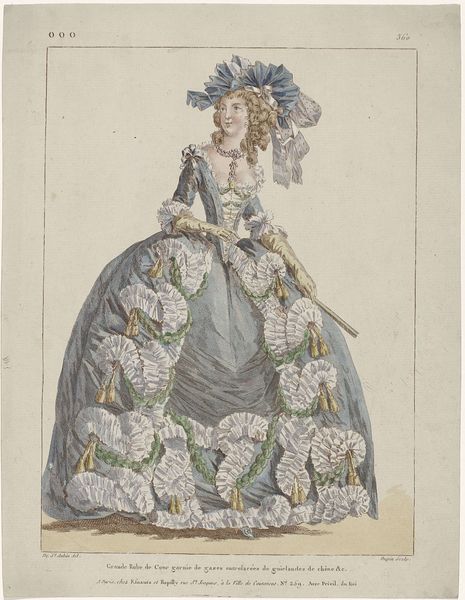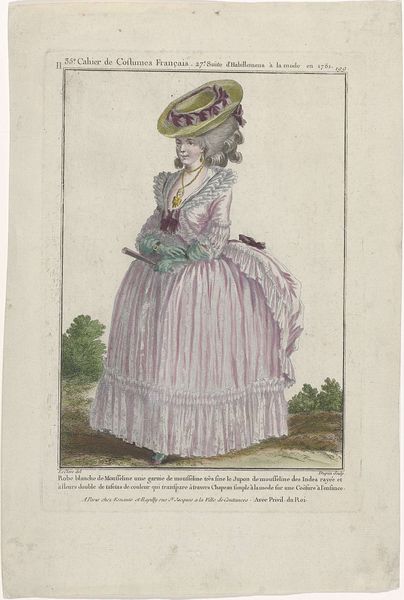
Gallerie des Modes et Costumes Français, 1787, sss 384 : Robe de Cour à la Turque; (...) c. 1787
0:00
0:00
nicolasdupin
Rijksmuseum
Dimensions: height 295 mm, width 227 mm
Copyright: Rijks Museum: Open Domain
Editor: Here we have an etching with watercolor, entitled "Gallerie des Modes et Costumes Français, 1787, sss 384 : Robe de Cour à la Turque". The outfit is quite striking, with its large skirt and feathered headdress. It seems so elaborate. What can you tell us about this print? Curator: This piece reflects a very specific moment in French history and its relationship with fashion. The "Robe de Cour à la Turque" represents the height of aristocratic excess just before the French Revolution. Notice the phrase "à la Turque"—the dress alludes to an orientalist trend, a fascination with the Ottoman Empire. It signifies the aristocracy’s attempt to exoticize themselves and their culture. Editor: So, it’s more than just a pretty dress? Curator: Precisely. Consider how fashion functioned within the French court. It was a visual language, a method of asserting social status and allegiance to the crown. These fashion plates were not just documentation; they helped disseminate these styles to a wider audience. Who could afford such a dress, and who was meant to merely observe it? What message was this extravagance sending to the increasingly disgruntled lower classes? Editor: That’s fascinating. I hadn’t thought about the political implications of fashion before. It seems like this image captures the tensions brewing beneath the surface of French society. Curator: Exactly! And that makes this seemingly frivolous image a valuable historical document. We see the seeds of revolution sown in the very fabric of the aristocracy's self-representation. Editor: I see this print in a whole new light. Thank you for that insightful analysis! Curator: My pleasure. It's crucial to remember that art exists within a web of social and political relations.
Comments
No comments
Be the first to comment and join the conversation on the ultimate creative platform.

